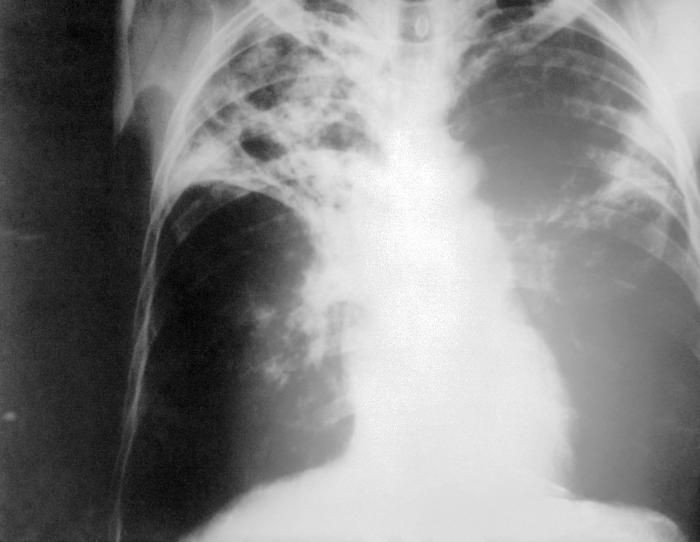‘TB Van’ Circles London, Offering Free X-Ray Screening: NHS Revives An Old Idea To Combat Tuberculosis

The United Kingdom reported 8,751 cases of tuberculosis (TB) in 2012 (about 14 incidents per 100,000 people), with most cases occurring in its cities and London in particular. To combat this resurgence of an old disease, London has resorted to tactics not seen since last century: public health professionals are driving around the city in a ‘TB van,’ neatly equipped with an X-ray machine, offering free check-ups to those passing by.
Technically, the van is known as the MXU, or mobile X-ray unit, and it is a facility run by the National Health Service. Not only does the van have screening equipment, but it also houses a team of nurses, radiographers, social and outreach workers, and technicians. Within minutes, an individual’s chest can be X-rayed. After the radiographer reads the results, a person is either cleared or referred to a hospital for confirmation testing. The process of being X-rayed and a technician reading the results takes all of a minute-and-a-half. Currently, only one MXU van is functioning in the U.K.; it remains in London where it travels to hostels, prisons, and community centers in an effort to find those who are difficult to track: generally, homeless people, drug users, and prisoners.
In the 1950s, the Associated Press reports, similar vans once roamed the streets of not only England but also the U.S., but dropped out of use with the waning of TB infections.
Consumption
Before the discovery of antibiotics, tuberculosis constituted a major health burden worldwide. An infectious bacterial disease, TB is caused by Mycobacterium tuberculosis, which most commonly affects the lungs. In healthy people, infection with Mycobacterium tuberculosis often causes no symptoms. Transmission occurs person-to-person, usually by coughing, though technically it is transferred via droplets from the throat and lungs of people with the active respiratory disease. Known as “consumption,” symptoms of tuberculosis include coughing, sometimes with sputum or blood, chest pains, weakness, weight loss, fever, and night sweats. TB is treatable with a six-month course of antibiotics.
The Associated Press reports that London’s TB van screens about 10,000 people a year and picks up about one new TB case per week. London reported a total of 3,500 TB cases last year, which is more than the Netherlands, Norway, Belgium, and Greece combined, and also more than some African countries, such as Gambia and Eritrea. The National Health Service indicates that the majority of cases occurring in the U.K. are affected people who were born outside the country. According to its estimates, 73 percent of all TB cases were born outside the U.K. and mainly originated from South Asia (60 percent) and sub-Saharan Africa (22 percent). The rate of TB among the non U.K.-born population, though, has continued to decline over the last seven years. Still, the National Health Service considers individuals from ethnic minority groups, people with social risk factors (such as drug abusers), and the elderly at highest risk.
Global Concerns
In 1993, the World Health Organization (WHO) declared TB a global emergency as it is the leading cause of death among curable infectious diseases.
In its latest report, WHO estimated 8.6 million people developed TB while 1.3 million died from the disease (including 320,000 deaths among HIV-positive people). WHO also indicated that 75 percent of the three million ‘missed’ TB cases occur in just 12 countries, including South Africa, Bangladesh, India, and Pakistan. WHO noted that the African and European regions are currently not on track to achieve mortality and prevalence targets and that progress toward targets for diagnosis and treatment of multidrug-resistant TB (MDR-TB) is far off-track. MDR-TB is caused by an organism that is resistant to at least isoniazid and rifampin, the two most potent TB drugs. Extensively drug-resistant TB is a rare type of MDR-TB that is resistant to not only isoniazid and rifampin, but also any fluoroquinolone and at least one of three injectable second-line drugs.
Globally, the TB mortality rate has been reduced by 45 percent since 1990. According to WHO, the target to reduce deaths by 50 percent by 2015 is within reach.
Published by Medicaldaily.com



























